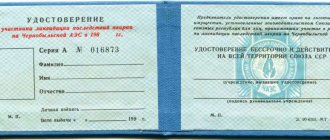The concept of a land redistribution fund
The Land Redistribution Fund is a state structure that represents a certain database in which accurate registration and cadastral data of territories are indicated. There are certain grounds provided for by law for the withdrawal of plots from the assets of the relevant fund. The main objective of the fund's redistribution activities is the preservation and reorganization of agricultural territories.
The Land Redistribution Fund is a state structure whose activities are regulated by state and municipal authorities.
However, the legislation does not oblige to strictly indicate the entire composition of the relevant fund. In addition, state and municipal authorities may not indicate the exact boundaries and location of various sites.
Exceptions in this regard are certain cases:
- if the land plots were acquired in order to use the preferential rights of certain government agencies or municipal institutions in a legal manner;
- in case of alienation of land territory on legal grounds;
- in case of voluntary renunciation of ownership rights to land plots by private individuals.
These grounds are the reason for determining the exact location, defining strict boundaries of plots, as well as entering complete cadastral data about specific plots. Responsible state and municipal authorities are obliged to dispose of the land assets of the fund in a legal manner, as well as regularly carry out inventories and update information data that was previously obtained.
Land Redistribution Fund for Agricultural Needs
Agricultural plots consist of areas of heterogeneous mass. Black soil plots and lands favorable for growing crops are used as agricultural land on the right of ownership, possession, use or lease.
Auxiliary agricultural lands are the following territories:
- access roads, highways and communication routes between populated areas;
- areas occupied by warehouses and other structures for agricultural products;
- artificial reservoirs and reservoirs for soil irrigation.
Water areas are part of land plots and constitute the category of real estate. According to Art. 11 of the Water Code of the Russian Federation, these objects are subject to transfer into ownership, possession, use or lease along with the land plot.
Agricultural lands include tree and shrub species and vegetation. Determining the identity of the flora is the responsibility of forest legislation. Art. 103 of the Forest Code of the Russian Federation establishes that forest plantations are not subject to purchase and sale, and therefore are not included in agricultural land. The rest of the vegetation, including trees and shrubs, may be the object of legal relations.
The agricultural fund consists of land and areas unsuitable for sowing. The second category of plots consists of ravines, swampy areas, burnt areas and other areas difficult to access for sowing. Until unsuitable areas are reclaimed, they cannot be included in the land redistribution fund.
Goals of creating a land redistribution fund
The purpose of creating a fund for the redistribution of land territories is the organization of state territories exclusively for agricultural purposes. The key factor in the process of establishing such a fund was the indicator of the intended use of land.
If there are grounds for the seizure of territories and their inclusion in the assets of the distribution fund, all plots do not lose their special purpose, as they continue to be used to meet the needs of agriculture and farming after determining the exact owner, proprietor or tenant.
The State Land Redistribution Fund was created with the goal of rational distribution, as well as competent division between citizens and legal entities of all land assets of the corresponding fund. The main task of the distribution fund is to manage agricultural areas in a manner that will guarantee compliance with the rules for intended use.
Redistribution is important for the subsequent implementation of economic activities, carrying out any farming work, as well as expanding agricultural activities, for organizing private households, gardening and truck farming.
Land Redistribution Fund
Reserve lands or, in other words, the land redistribution fund do not have a designated purpose, because are not included in the categories established by law. The plot redistribution fund cannot be classified into any of the following categories of land:
- agricultural plots;
- land for industrial use;
- transport and junction highways;
- television and radio broadcasting lands;
- land allocated for the space industry;
- defense plots of land;
- protected and recreational areas;
- territories of historical and cultural interest;
- forestry and water funds.
In accordance with Art. 96 of the Land Code of the Russian Federation, reserve lands do not have owners, possessors, users or tenants. The components of the land fund are not used for their intended purpose, because... this appointment is not mentioned in any act. The absence of a designated purpose is a fundamental criterion for classifying land as a reserve.
The procedure for the seizure of land from owners, owners, users and tenants is established in Art. 41 and 43 of the Land Code of the Russian Federation. Accordingly, these lands are also included in the category of the land redistribution fund and do not have a designated purpose.
Termination of the lease period and the right to use land automatically transfers the plot to the category of reserve land. This is subject to the provisions of the current legislation and applies to lands not in the hands of owners, occupiers, users or lessees.
Grounds for including land plots in the land redistribution fund
The legislation defines those cases that are grounds for including territories in a special fund for the purpose of further disposal and redistribution of plots among private users (individuals and legal entities), as well as state and municipal bodies and enterprises. The grounds for including land plots in the state land redistribution fund are the following territories:
- plots that did not become the object of inheritance, since due to circumstances there were no heirs who lay claim to the territory on any grounds (legally, in the presence of a will);
- territories that were not inherited because the person acting as the testator voluntarily deprived all heirs of the rights to own this site;
- land plots that the heirs voluntarily abandoned without indicating a specific entity who would become the legal owner of the territory;
- real estate for which an application for voluntary abandonment of the site was submitted;
- plots that were not the object of inheritance, if none of the legal heirs declared their right to own the plot in the prescribed manner and within the permitted time frame;
- plots that were transferred by the heir to state ownership on a voluntary basis;
- real estate in the form of land plots that were withdrawn from ownership, possession or use in the presence of legal grounds related to violation of land legislation (violation of the rules for the intended use of land, causing harm, violation of rules and failure to fulfill direct duties, conclusion of illegal transactions, etc.) .
Features of the land distribution fund
The activities of the land redistribution fund (LRF) are regulated by municipal and state bodies.
But the legislation does not require a strict indication of the entire composition of the fund. Government officials may not indicate the exact location and boundaries of sites.
To understand exactly what a land redistribution fund is, you need to know the exceptions in relation to its land plots.
These include the following cases:
- alienation of territory by law;
- voluntary renunciation of land ownership rights by private individuals;
- purchase of plots in order to use the pre-emptive right of municipal or state structures in a legal manner.
The indicated grounds allow us to find a reason for determining the boundaries of the site, the exact location, and entering complete cadastral data about specific areas.
Responsible authorities manage land assets, carry out inventories, and update previously obtained information.
Use of redistribution fund lands
Land territories that, during the process of reorganization and revision, fell into the redistribution fund, can be used for a variety of purposes. First of all, these areas are intended:
- for the initial creation, as well as the further expansion of standard peasant and farm enterprises;
- for the organization and further completion of personal subsidiary enterprises;
- for carrying out any types of agricultural work, including gardening, vegetable gardening;
- for haymaking or use as areas for grazing livestock;
- to accommodate non-profit associations whose main activity is gardening, horticulture and farming.
Land territories that are temporarily at the disposal of the land redistribution fund are intended for the transfer of property for the use of citizens and legal entities on various forms of ownership rights on the following grounds:
- concluding a land lease agreement;
- in accordance with federal and municipal laws.
Persons who received land from the redistribution fund are required to comply with all rules and fulfill the obligations that are developed for all agricultural land in accordance with current legislation.
Purposes of creating the fund
The Land Redistribution Fund was created with the aim of organizing state territories of specifically agricultural significance . The key factor in this issue is the indicator of the intended use of land.
If there are grounds for excluding a land plot and including it in an asset of the distribution fund, then the territory does not lose its intended purpose due to its continued use for agricultural needs, but after the owner or tenant has been determined.
The State Land Redistribution Fund was created in order to rationally and competently divide all land assets between legal entities and individuals . The main task is to distribute territories to ensure compliance with the rules of intended use.
Redistribution is necessary for the further organization of economic activities, carrying out farming work, expanding agricultural activities, organizing personal subsidiary plots, vegetable gardening and horticulture.
Public availability of information about land plots as part of the redistribution fund
The redistribution fund was created not only to carry out state registration work, but also for the convenience of citizens who are interested in acquiring and using land territories. Therefore, all citizens and enterprises that apply for these land plots can freely view all the necessary information about any territorial object.
The fund for the redistribution of state land territories is an open state structure, therefore all information about the availability of lands in the redistribution fund is available to all categories of citizens:
- individuals (individuals and legal entities);
- state and municipal local governments;
- institutions and enterprises that are owned by municipal and state bodies;
- enterprises that are created on a non-commercial basis.
Ensuring and maintaining public accessibility of the fund's information base on redistribution is the responsibility of all state executive bodies and local municipal authorities.
Author of the article
How is the land redistribution fund formed?
The entry of lands into the non-target category is the main basis for replenishing the fund. In order to obtain information about the availability of land in the redistribution fund, the category must have several unallocated plots.
Ways to replenish the land redistribution fund:
- renunciation of land voluntarily (for example, as unnecessary);
- recognition of land as escheatable property by inheritance (in the absence of heirs, their refusal, recognition of applicants as unworthy, failure to indicate the addressee when refusing an inheritance, etc.);
- Forcible seizure of a land plot (improper use).
Forced seizure of land occurs in the following cases:
- Withdrawal for state needs – Art. 279-282 of the Civil Code of the Russian Federation establish the mandatory purchase of the required land from the owner of the site.
- According to Art. 50 of the Land Code of the Russian Federation, forced seizure of land without compensation occurs if a person commits a crime.
- Forced deprivation of ownership of land and further confiscation of the plot may be associated with misuse of the allotment, as stated in Art. 54 Land Code of the Russian Federation.
Thus, the land redistribution fund can be replenished from various sources. In this case, the lands are subject to inclusion in a separate list based on the characteristics of their location and the nature of the soil.
Grounds for including lands in the fund
The legislation clearly defines cases that may be grounds for including territories in a special fund for further redistribution and disposal of land plots between private users, municipal and state bodies and enterprises.
To do this, there must be certain grounds for including such sites in the state fund:
- plots that were transferred by heirs to state ownership;
- the territory was not inherited due to the deprivation of the testator's heirs' rights to the property;
- if the plot has not become the object of inheritance;
- voluntary refusal of heirs from the property bequeathed to them;
- abandonment of the site;
- if the plots were withdrawn from ownership, use, possession due to violation of land legislation (concluding illegal transactions, ignoring the rules for the use of territories, failure to fulfill direct responsibilities).
Article 80. Land Redistribution Fund
1. For the purpose of redistributing lands for agricultural production, carrying out by peasant (farm) enterprises their activities, expanding such activities, creating and expanding personal subsidiary plots, gardening, livestock farming, gardening, haymaking, grazing livestock, a land redistribution fund is created as part of agricultural lands .
2. The land redistribution fund is formed at the expense of land plots from agricultural lands that enter this fund in the event of the acquisition by the Russian Federation, a constituent entity of the Russian Federation or a municipality of ownership of a land plot on the grounds established by federal laws, with the exception of cases of acquisition of ownership of land plot seized for state or municipal needs.
3. The use of lands from the land redistribution fund is carried out in accordance with Article 78 of this Code in the manner established by laws and other regulatory legal acts of the Russian Federation.
4. Information on the availability of land in the land redistribution fund is publicly available.
Therefore, the commented article is extremely important; it has put everything in its place, and now temporarily unused agricultural land will be provided only for agricultural use.
When redistribution is impossible and when an agreement is concluded
An application for redistribution of land plots will not be satisfied if:
- the combined area of the entire territory changes as a result of the operation up or down;
- the owner of the plot will not be able to drive out of it onto public roads;
- redistributed territories overlap each other;
- an allotment of municipal land is involved in the operation along with the land of an individual.
There may be exceptions to the last point. For example, when the cadastral plan of the entire area changes. Often, obtaining permission for the procedure requires the consent of the tenants of the territory, citizens using the land and other interested parties.
To create land plots by redistributing old ones, their owners must enter into an agreement. The document is drawn up by hand, and the following information is indicated in it:
- information about the owners of land plots themselves;
- territory parameters and technical information;
- what rights do the owners have to this territory;
- purpose of the operation.
After registration, this paper is given to the cadastre engineer so that he can begin geodetic surveying. It is also used to submit an application for the operation in question to the relevant government agencies and to register the formed plots (as well as to obtain cadastral passports for them). The judicial practice available for study indicates that the conclusion of such an agreement makes the redistribution operation simple and helps to avoid conflict situations between owners in the future.
The government agency dealing with such issues issues a document allowing work to begin on the redistribution of territory.









